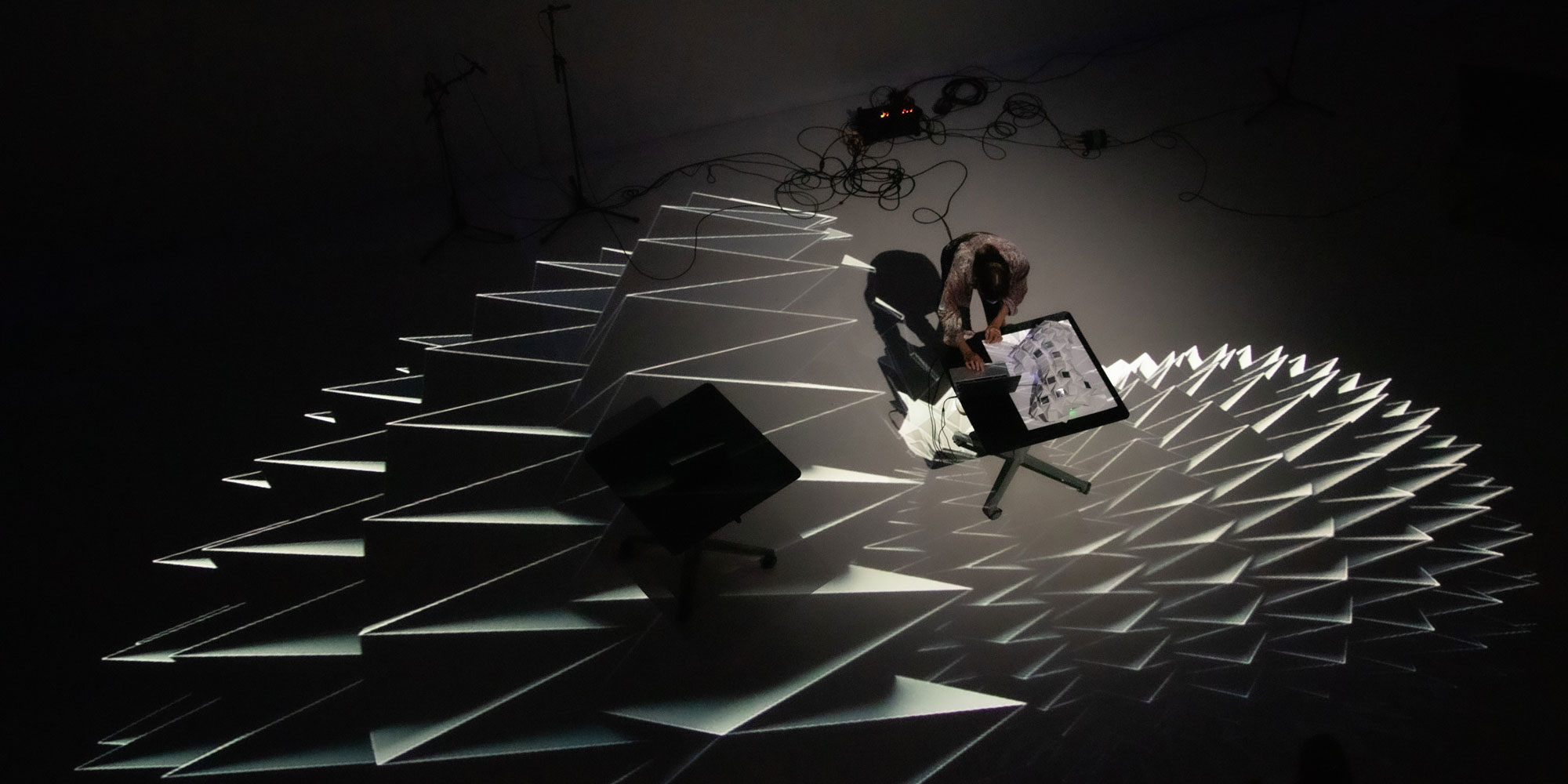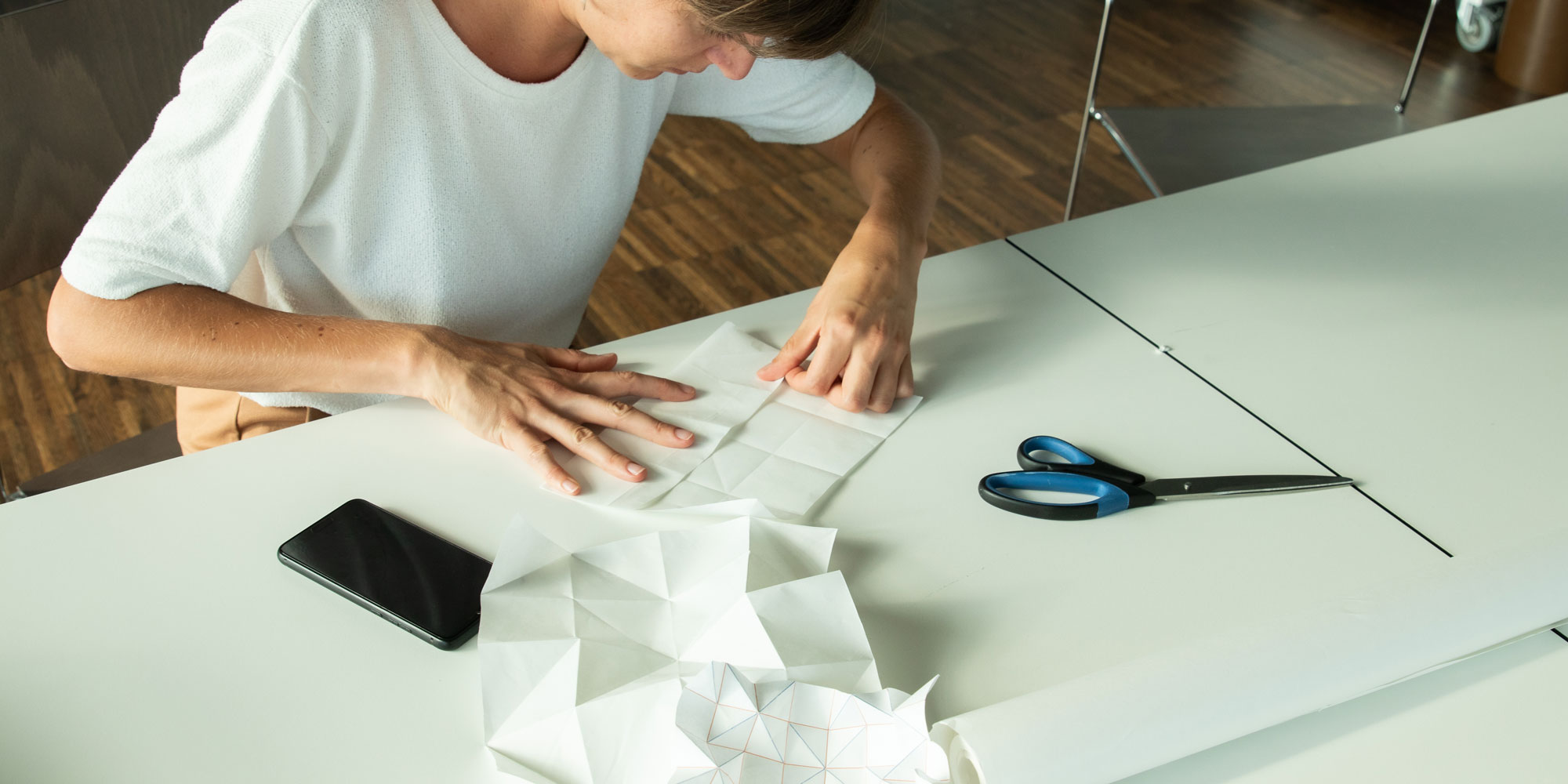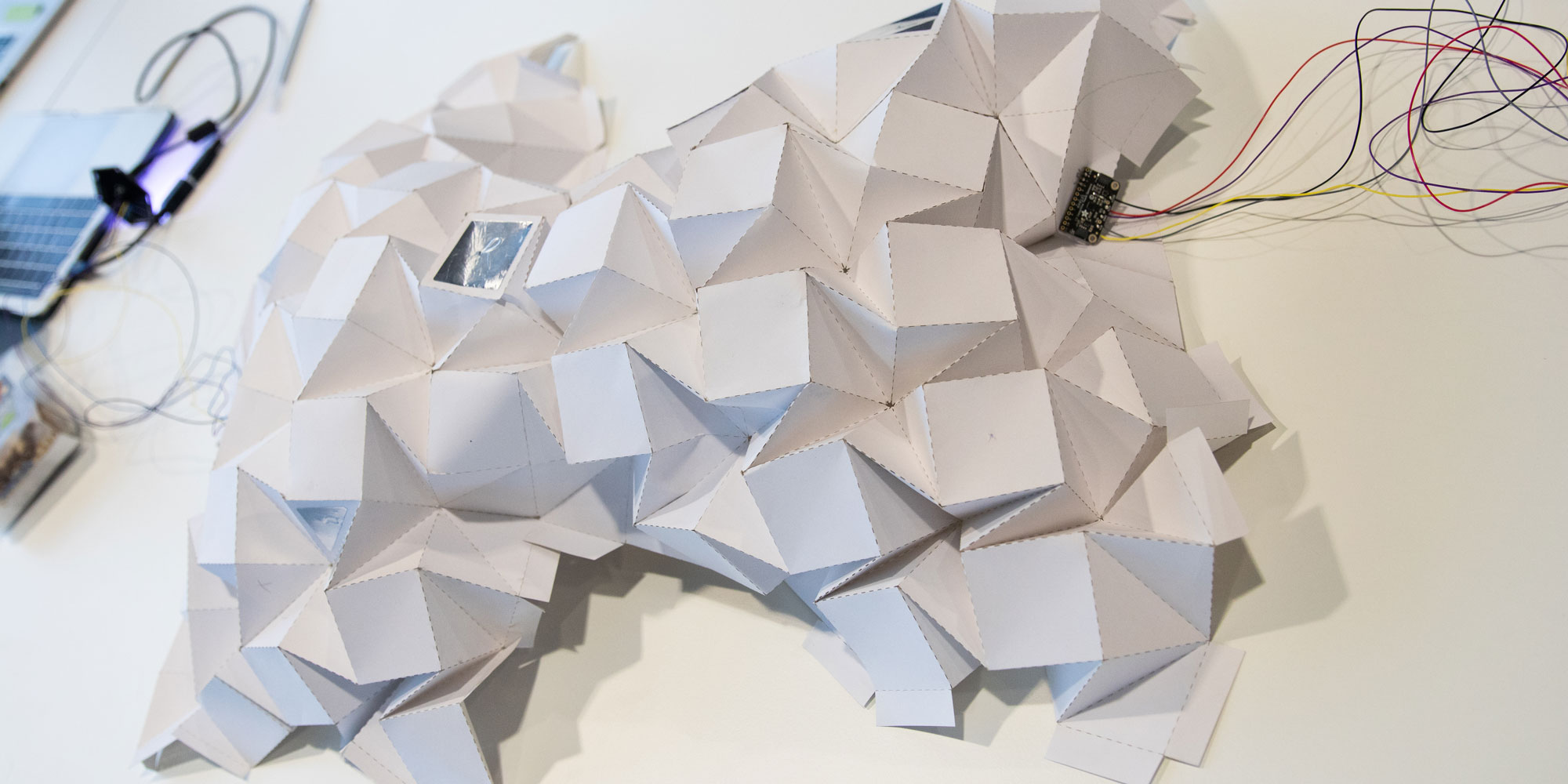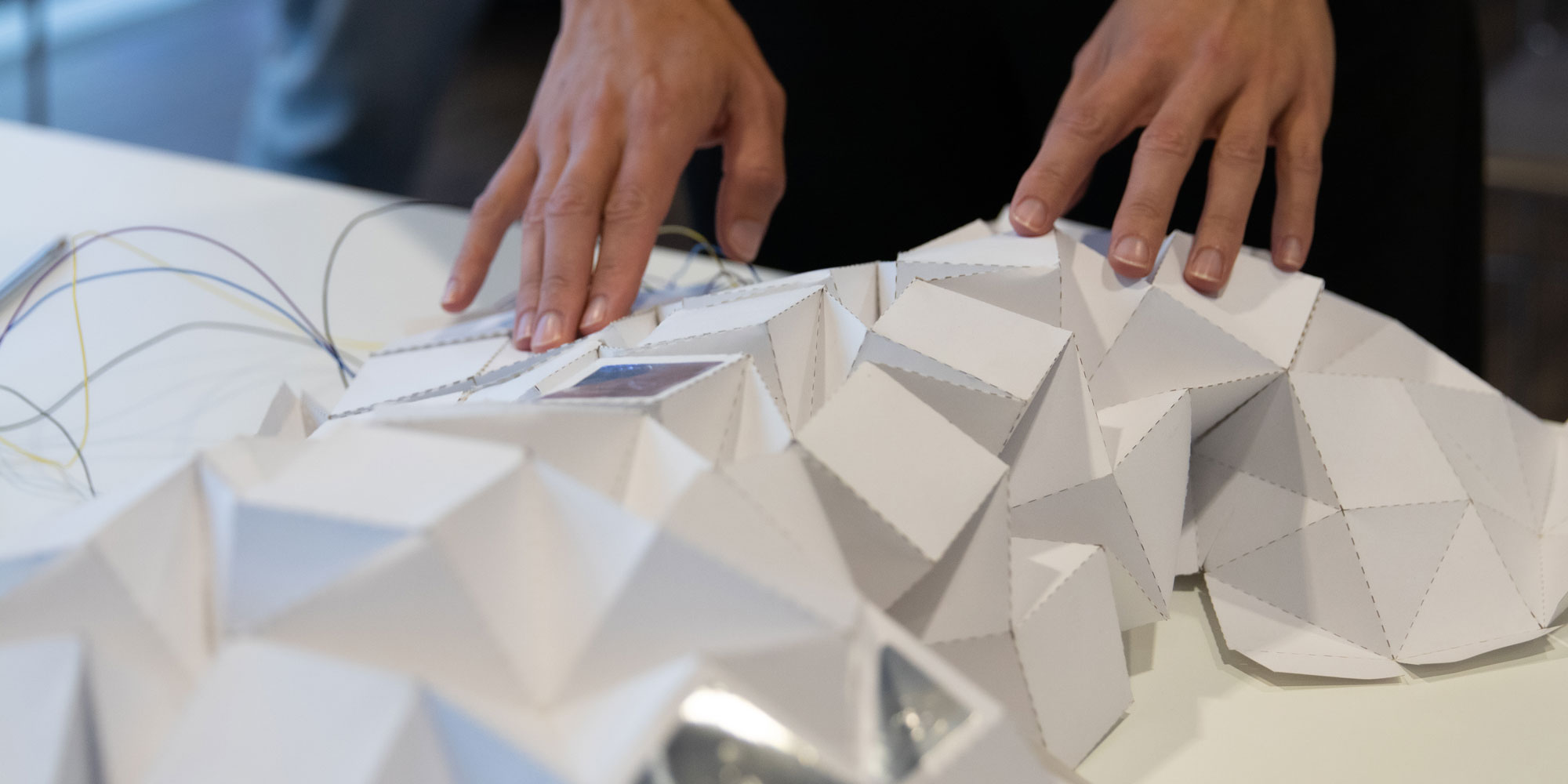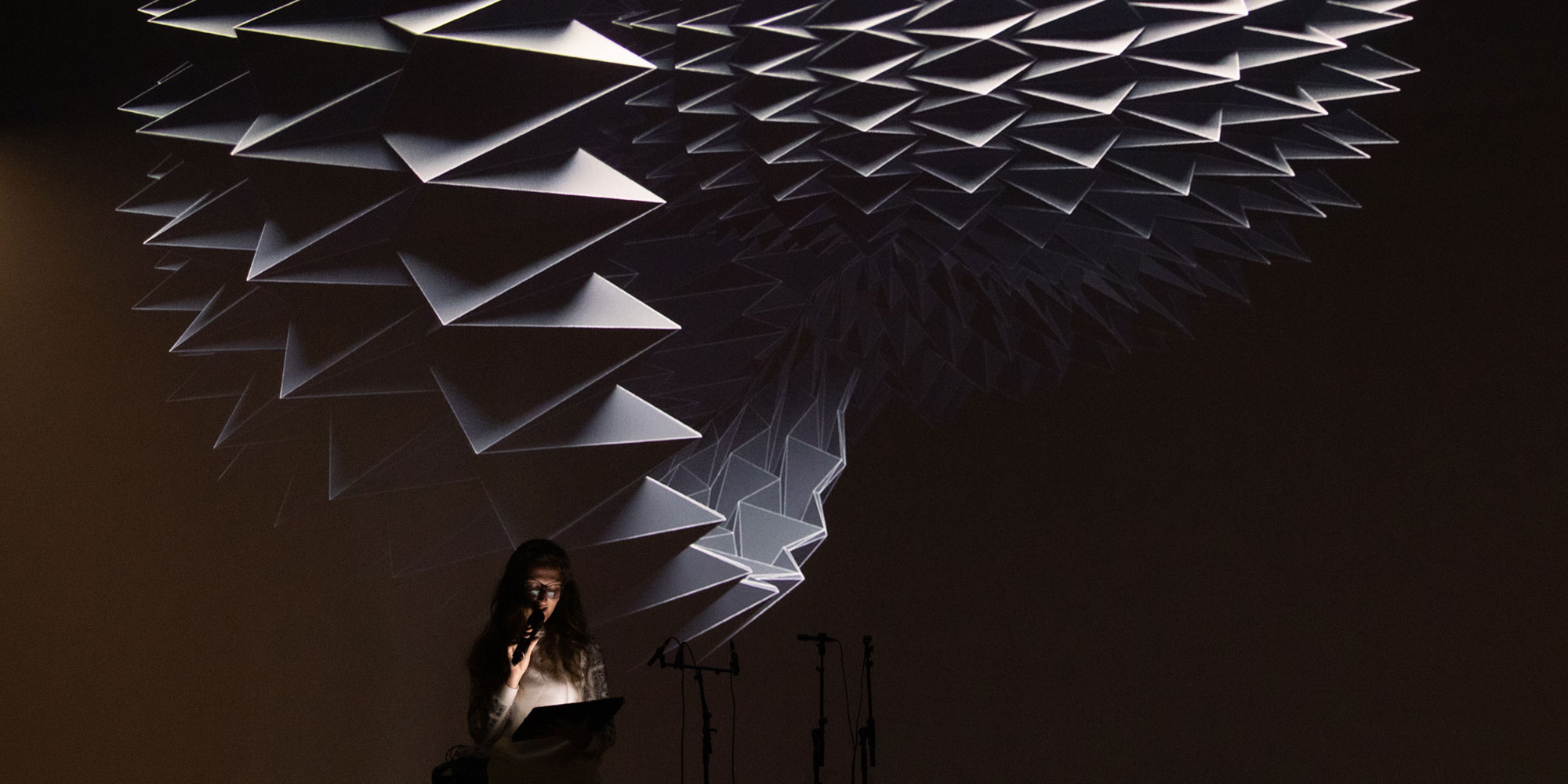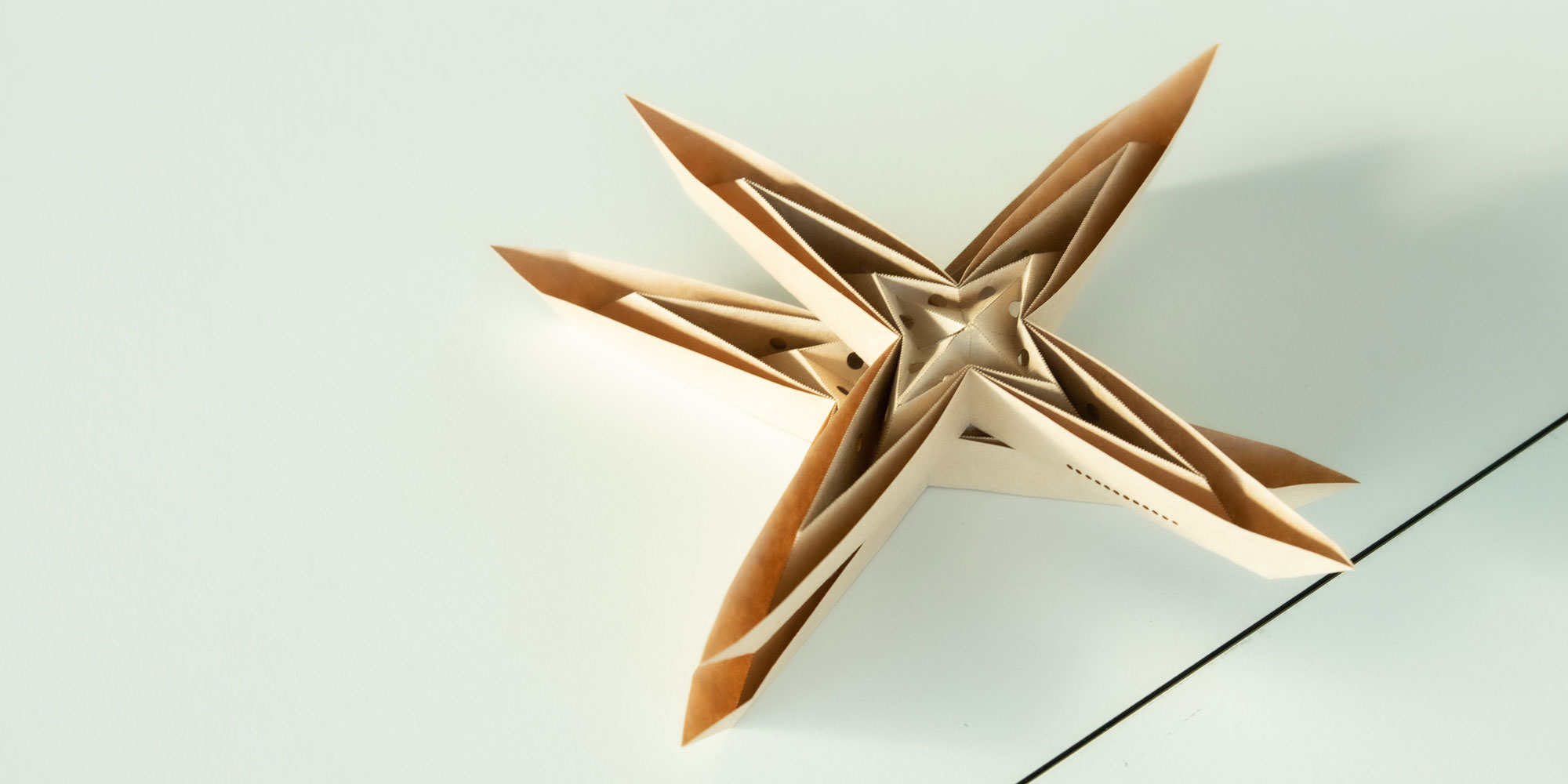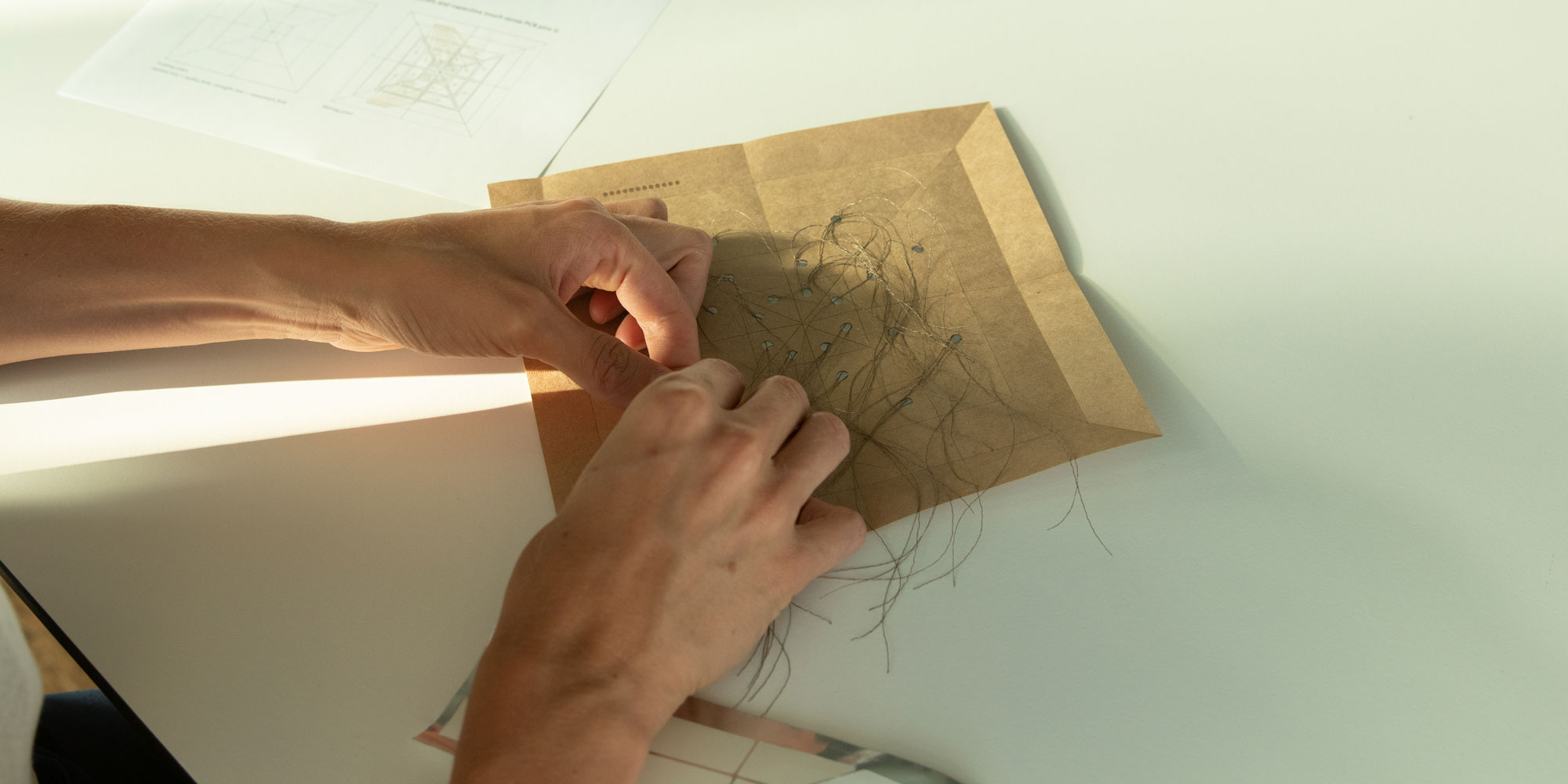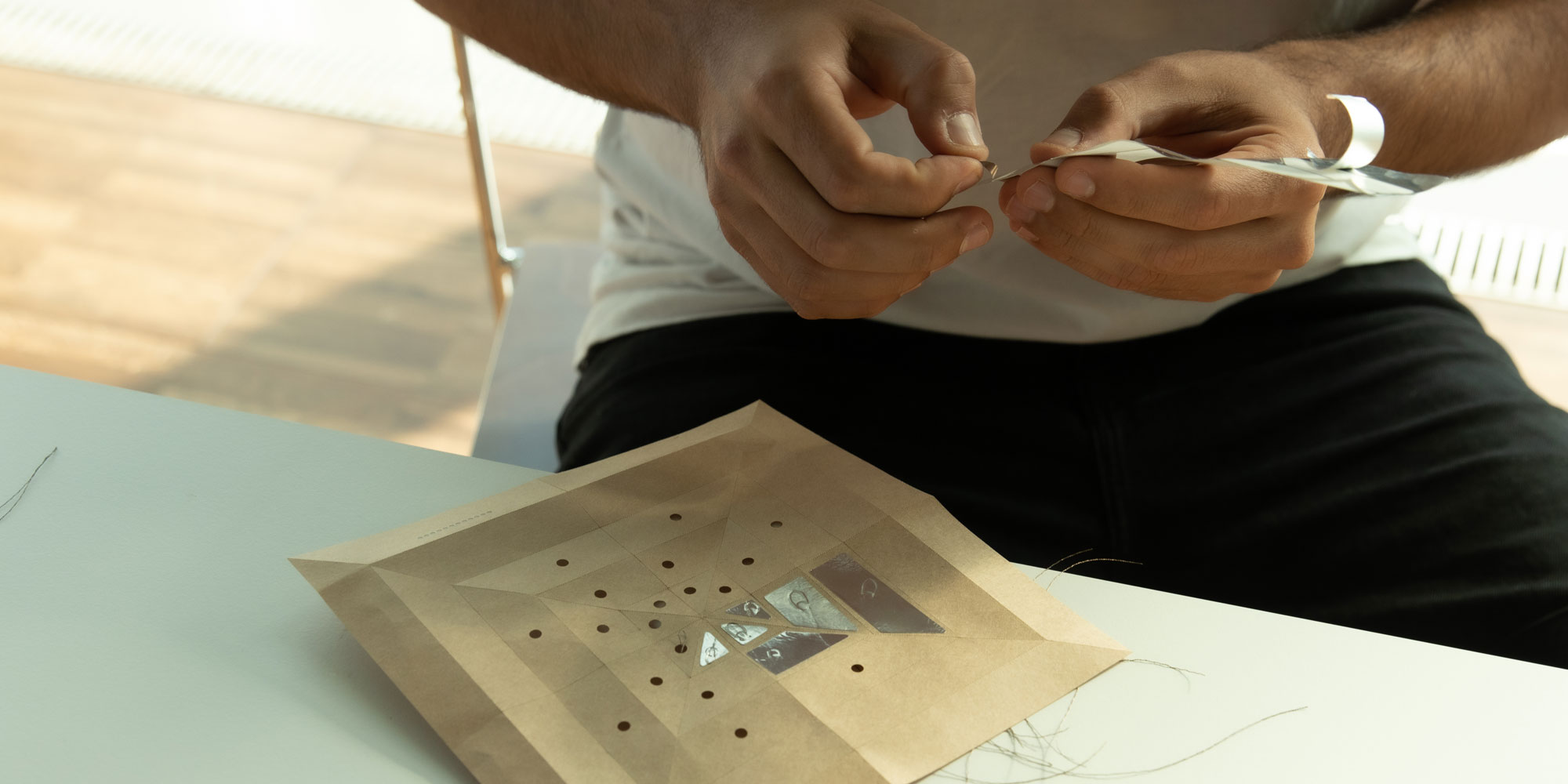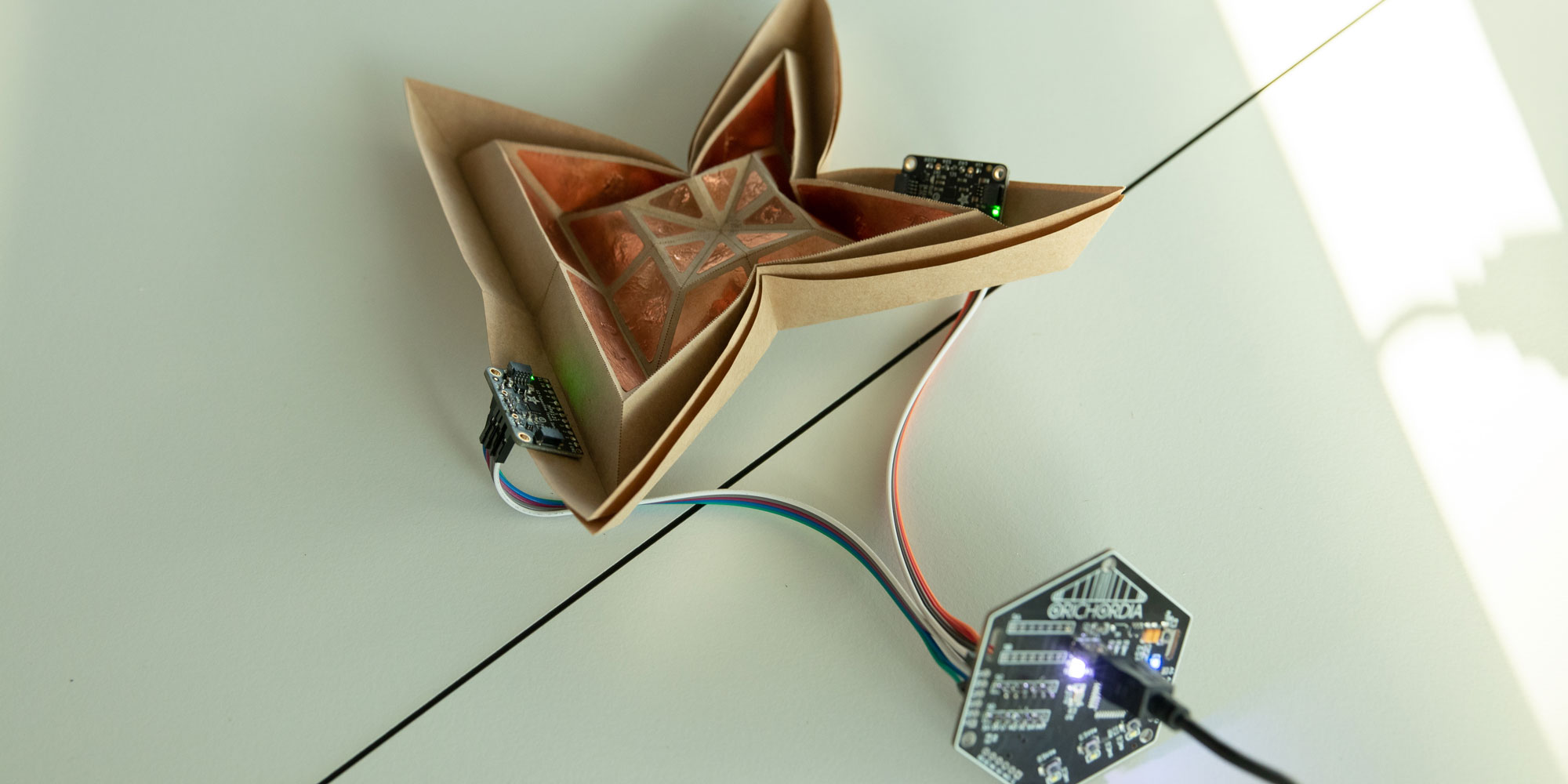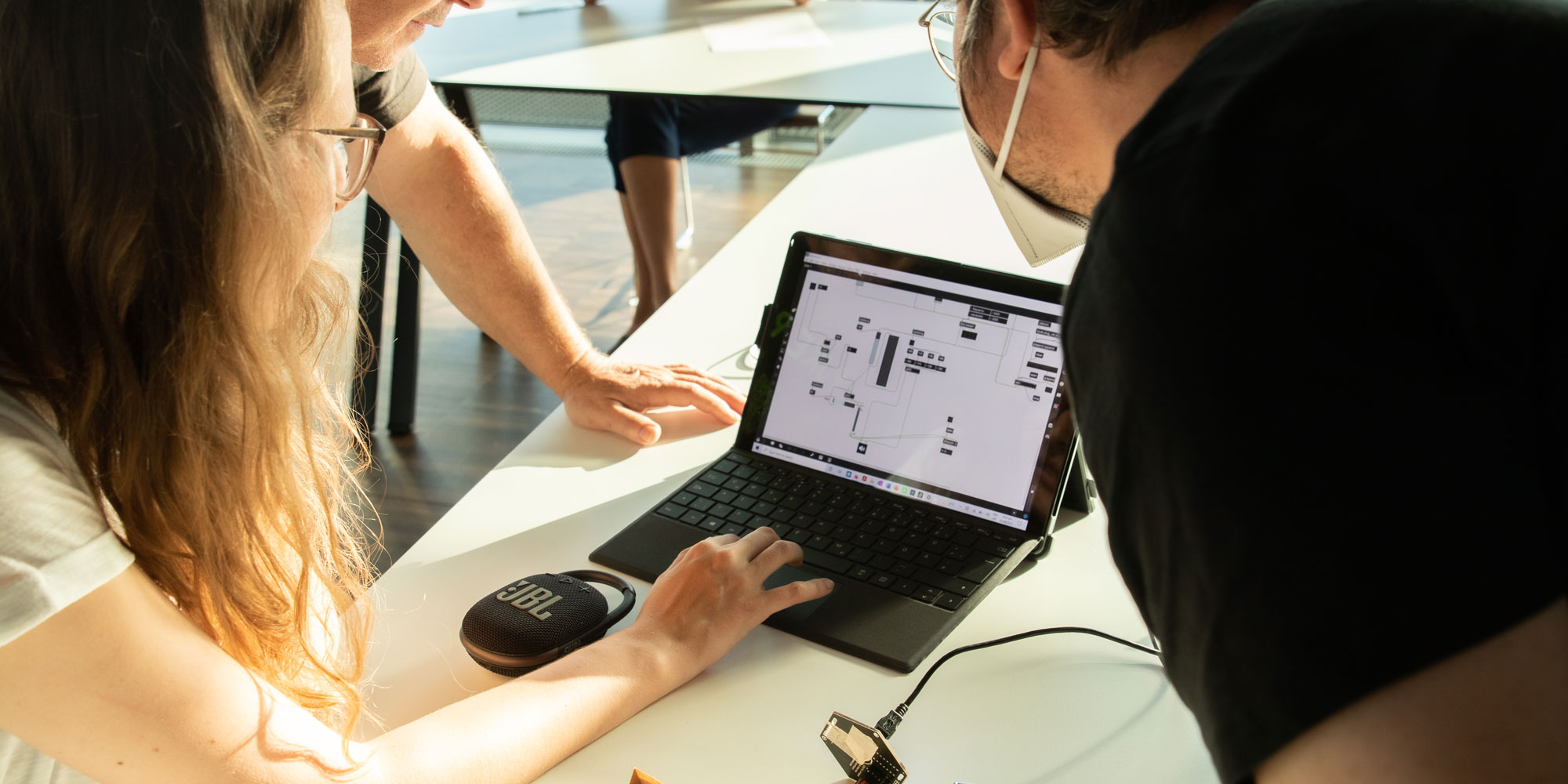What does it take to create self-aware robotic instruments out of a piece of paper? An Ars Electronica Futurelab workshop was only the start of a new type of avant-garde robotic origami music performances.
His flexible robotic origami objects are definitive in the context of contemporary electro-mechanical art and combine the traditional and natural structure of origami with cutting-edge technology: To build sensitive robots, Matthew Gardiner, key researcher and artist in the Ars Electronica Futurelab, uses nothing less than the complex structure of folded paper. With his Oribots, he points to new developments in technology, – tiny biomedical devices like an Origami stent by Kaori Kuribayashi or the enormous James Webb Space Telescope.
But Oribots also make us understand the world around us better. The functional aesthetics of these gently moving objects respond to physical movement and relate to robots, but also to nature. The artistic research develops new approaches for design, soft robotics, fold printing and architecture – and most recently for the world of music, with Origami Instruments.
Oribotic Instruments of course also take advantage of the unique functionalities of the folded origami geometry to pass on their tremendous stability and high flexibility to their oribotic components. Experiments with materials, paper foldings, form and function, and different options of sound design evoked enthusiasm among some DIY-workshop participants, held by Oribotic assistant researcher Anna Weiss and Arno Deutschbauer. The results, magnificent self-aware Oribotic Instruments, were presented in a unique performance as part of the Night Performances celebrating the 25th anniversary of the Ars Electronica Futurelab in Deep Space 8K.
By definition, robots are something that interacts with our physical world based on sensors, actuators and the principles of information processing. Oribotic research, is therefore mainly concerned with three areas: Research of new materials, different manufacturing techniques, sensor systems and digital programming of robotic origami. It is necessary to understand the mathematical background of the folding geometry.
The musical character of the folded Origami Instruments becomes the basis of the musical concept and their gentle movements are inspired by nature. The very special Oribotic performance depends significantly on the idea behind its programming, which defines the sound design: From the use of animal sounds to harmonic piano or orchestral melodies, Origami Instruments set almost no limit to your musical creativity: These avant-garde instruments can be used like midi controllers to assign a specific sound or function to each surface. But additionally, they give a musical meaning to certain movement sequences or folded structures. Physical movements are captured digitally via sensor technology. Squeezing of the shape thus could sound different from what sound an extension of the instrument would create.
Oribotic Instruments offer all advantages of electronic music, but at the same time unfold a lot of space for creativity and inspiration. The musicians hold a physical instrument in their hands that follows the natural musical movements of their bodies to merge with the instruments and the musical composition.
Credits
Ars Electronica Futurelab: Arno Deutschbauer, Matthew Gardiner, Anna Weiss
Partners:
Funded through the FWF Austrian Science Fund, PEEK Program.
Studio Matthew Gardiner https://orilab.art

